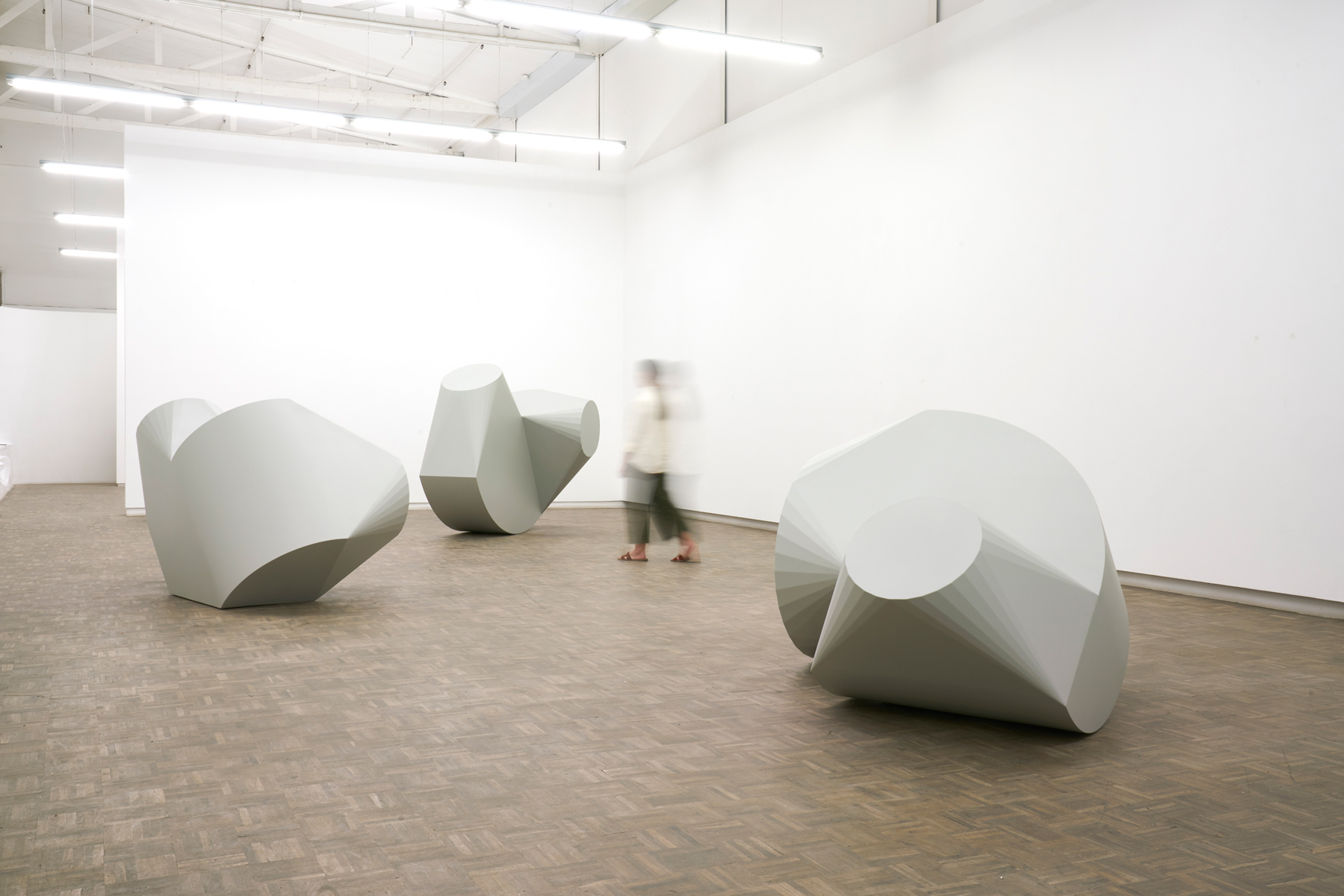

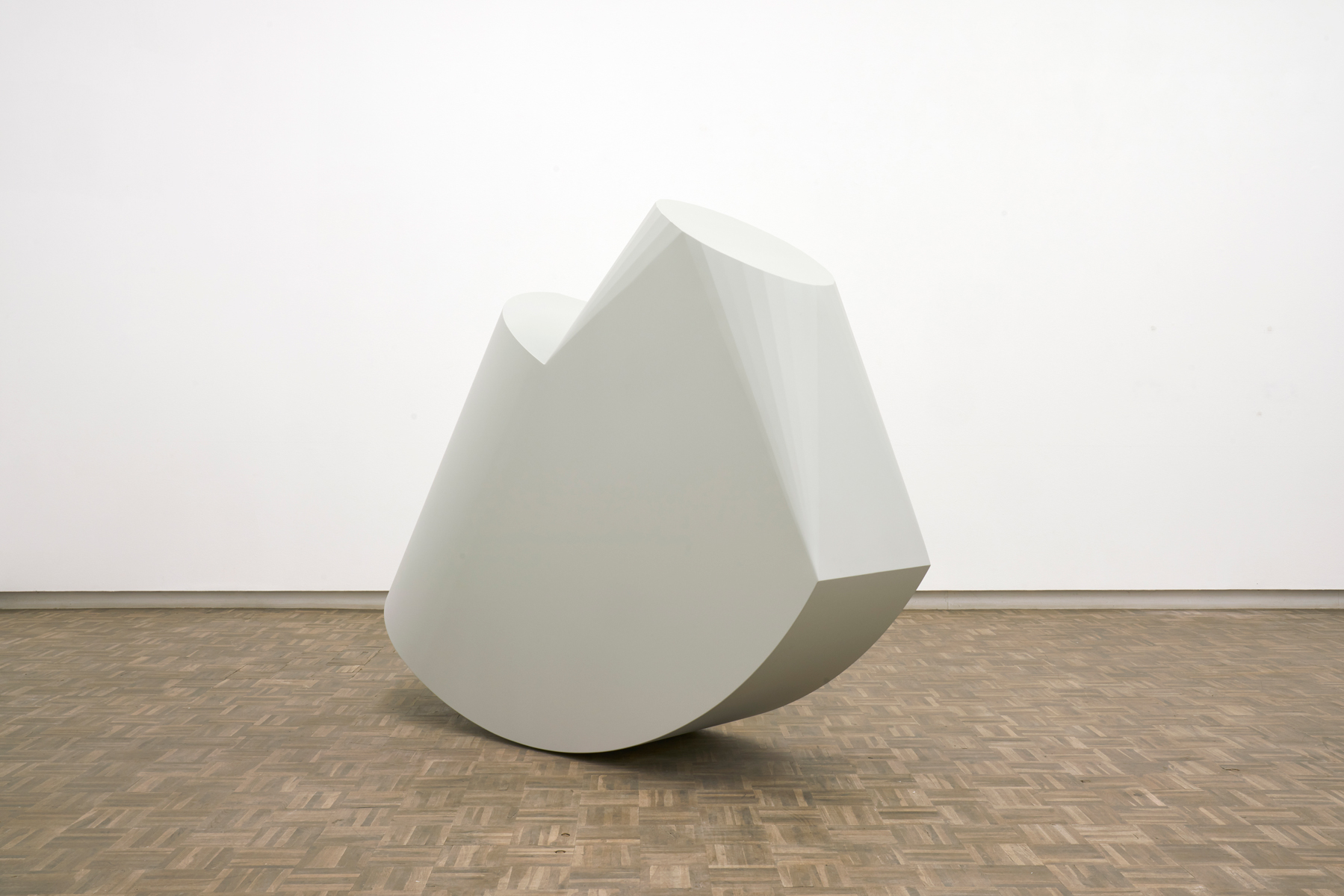


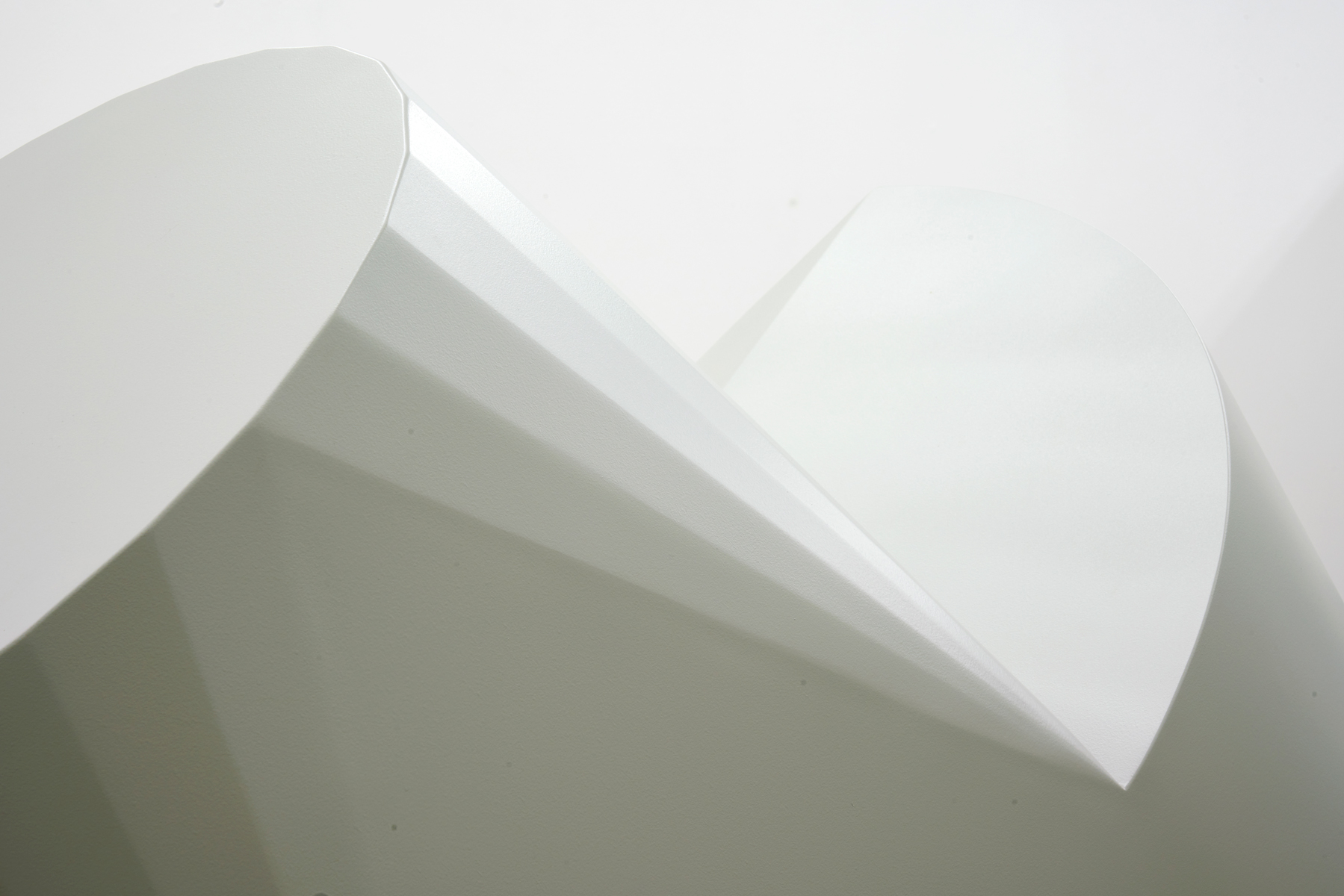
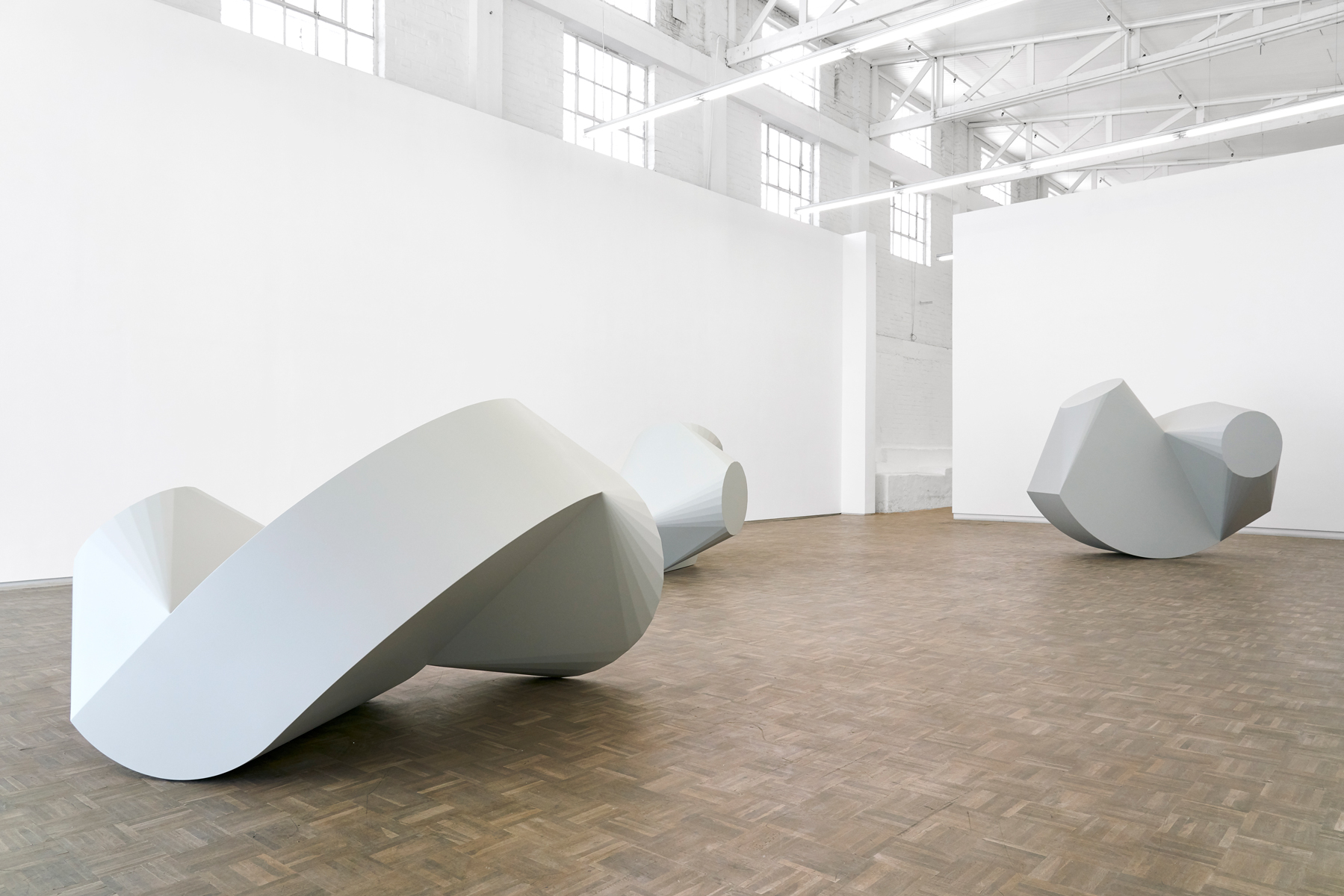

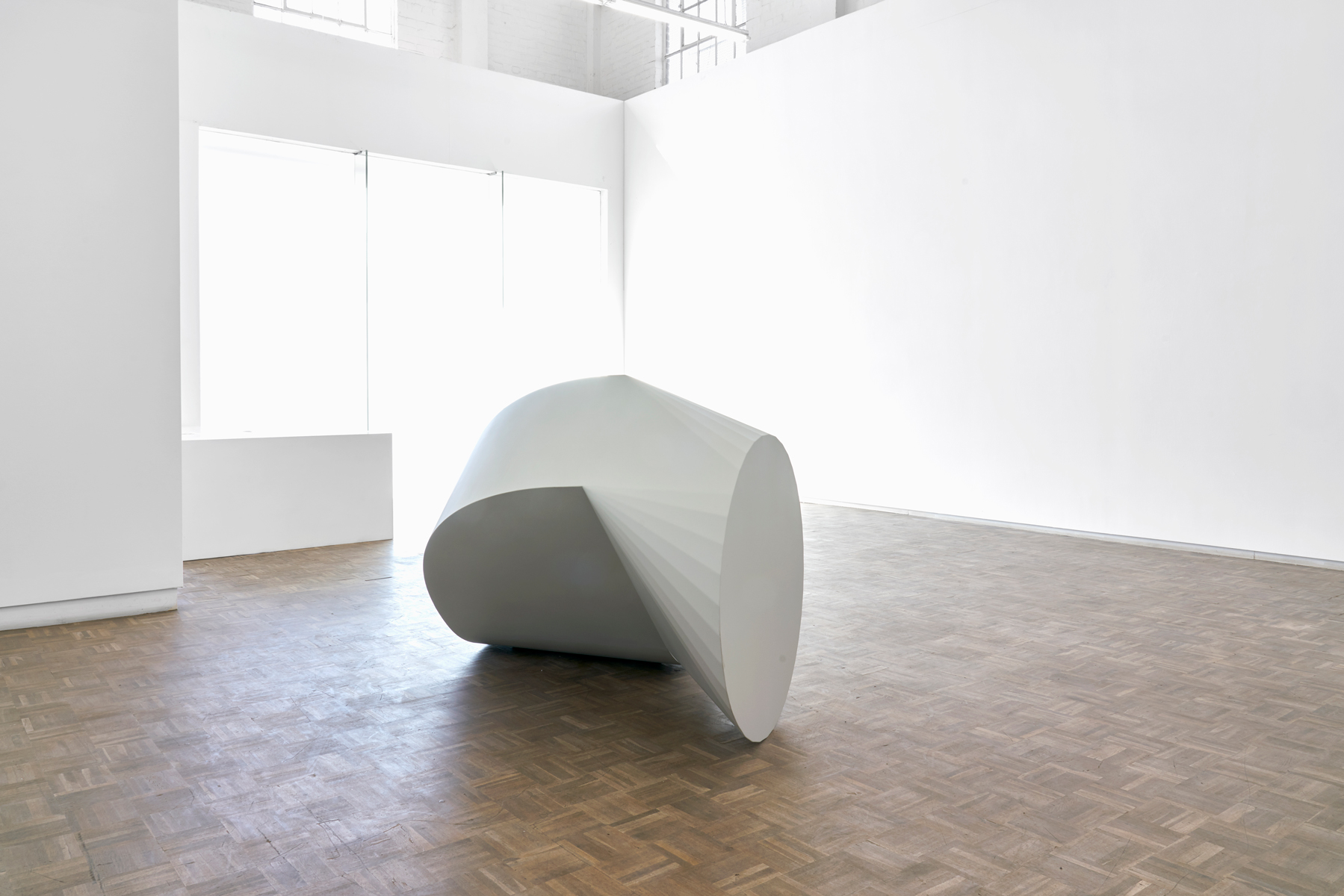


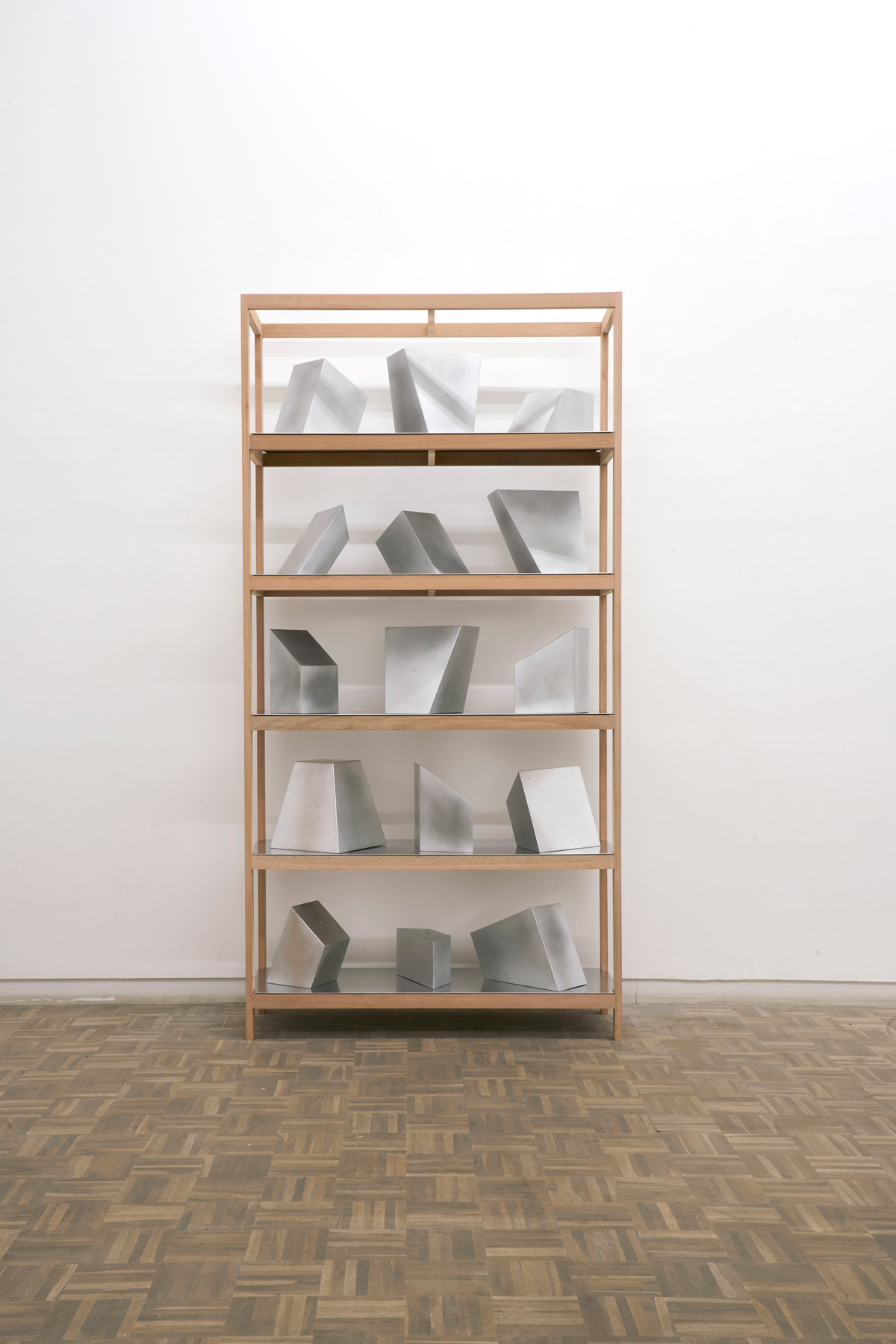





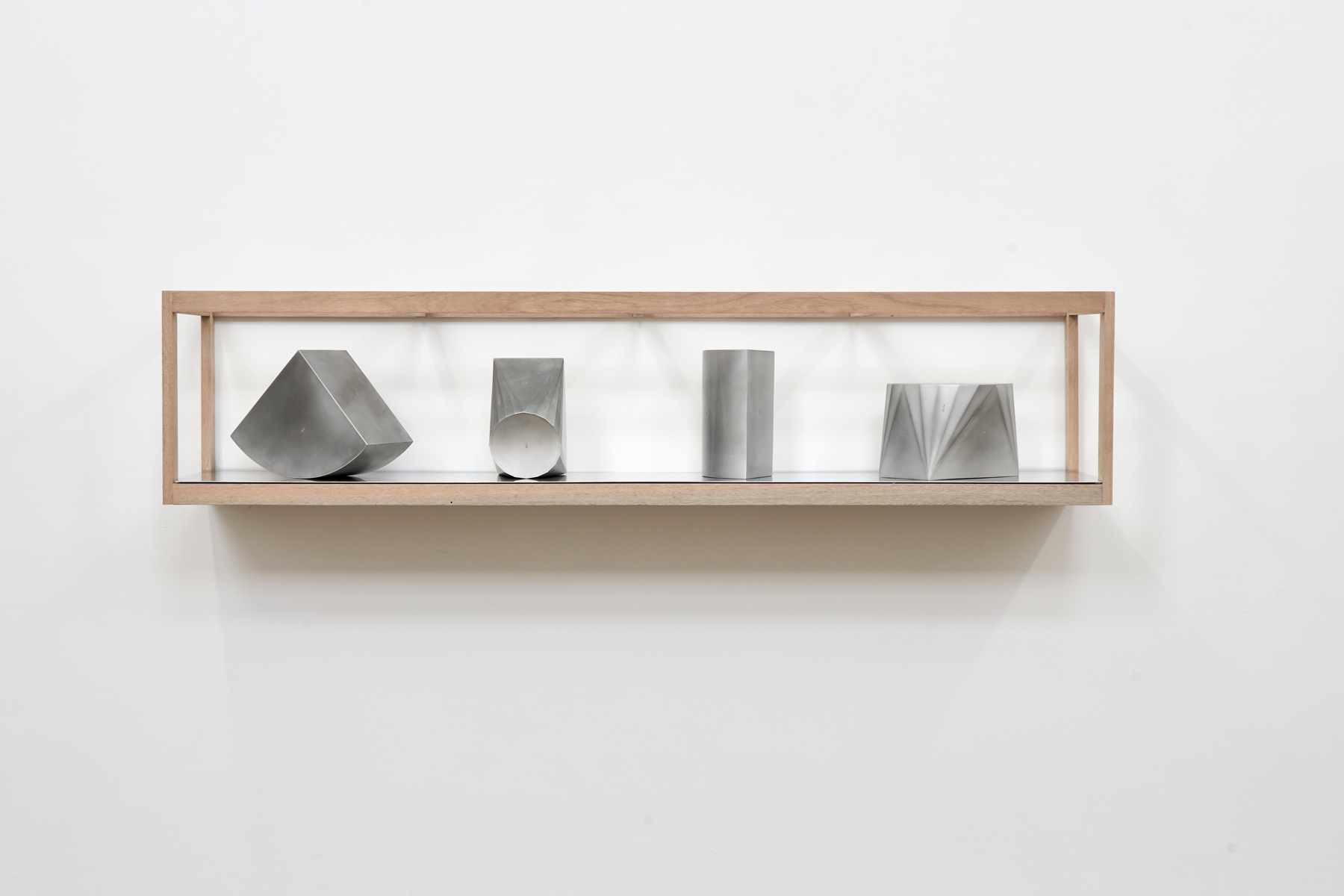





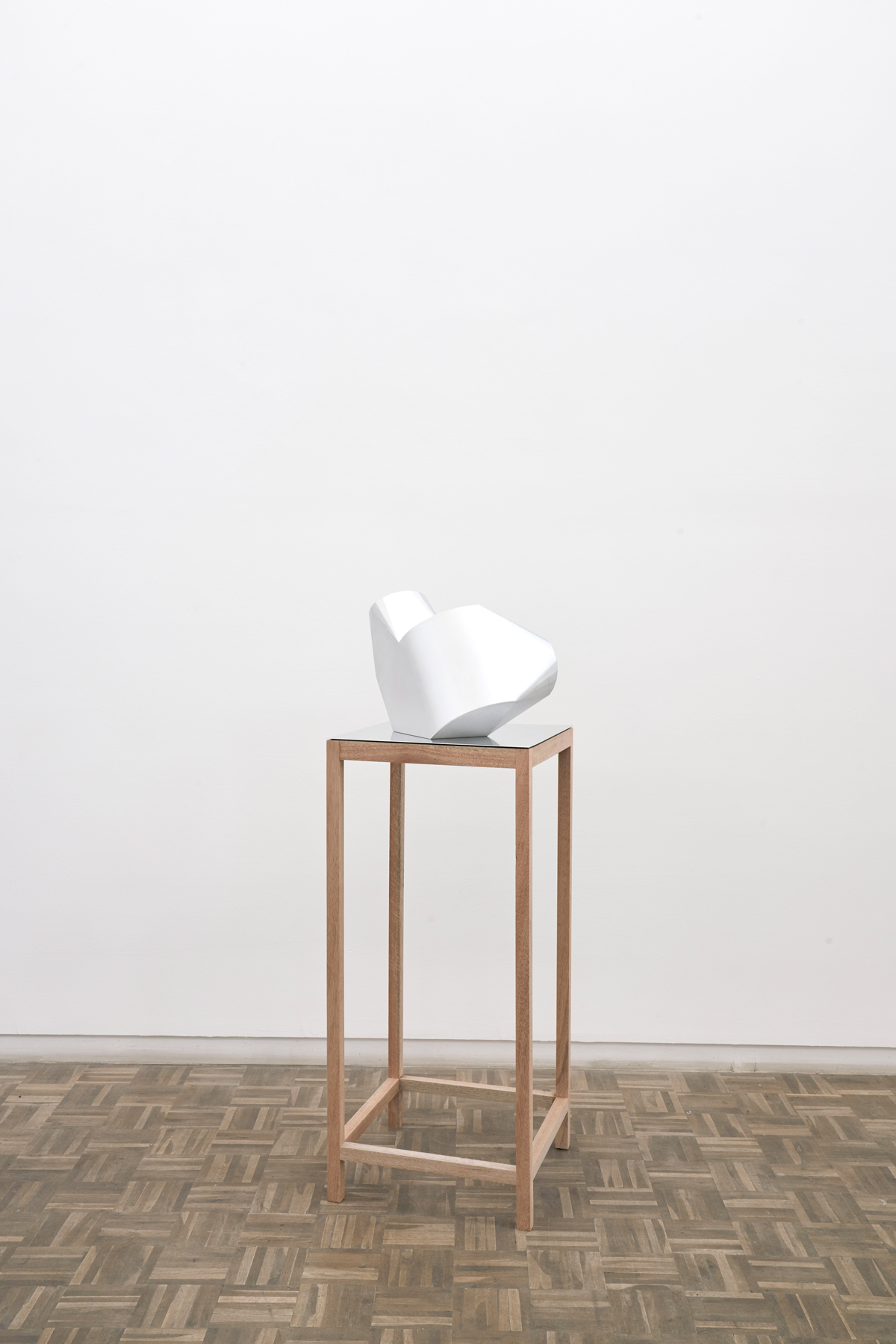

blank is pleased to present variations on a lofted bend, a solo exhibition by Kyle Morland.
In this, his sixth exhibition with the gallery, Morland leaves behind the expansive linear forms of his earlier sculptures, retaining only their points of intersection. Borrowing techniques and principles from the engineering field, he interrogates in detail those precise moments of transition, or mergence, from one shape into another, bending sheets of metal in an investigation of what are known in technical terms as ‘lofted bends’.
Presented as a series of self-contained, modular units, Morland imagines the exhibition as a ‘library of forms’. In a process of play, the artist activates this library to develop a vocabulary of his sculptural language. As with learning any new language − beginning with single units, sounds or words, to gradually build more complex phrases and ideas − he freely connects the components to create more intricate assemblies, intuitively deciding between combinations of forms to produce the most pleasing compositions. Placed in clusters, the sculptures appear to be manufactured repetitions, but at a closer look, it transpires that they are differentiated through nuanced shifts in how the shapes converge, their subtle variations encoded within the pattern numbers punched into their surfaces.
It is through this pursuit of form that Morland’s sculptures move between various associations. Suggestive of the figure, close-ended tubular forms contort and extend outwards from the centre like truncated limbs. This relation to the body is further emphasised through scale; one is led to walk along and around the curved surfaces of the larger sculptures that are similar to human height. Smaller aluminium sculptures, presented on shelves and a table, tempt the viewer to interact with them: pick them up, hold them and move them around. Constructed from the same materials that make up the sculptures, the shelves on which the sculptures are presented make deliberate reference to the origins of the works and the processes that gave rise to them. This gives an impression of the studio space and with that, the performative logic of how the works were developed.
Morland manages to conceal the making of his large sculptures, through erasing visible seams that once identified the parts as separate. The effect is a gestalt sensation, countered by the laying bare of certain aspects of his systematic process, such as the installation of the single units. Morland’s central focus on transitions continues to play out as his work simultaneously invokes references to industry and the body, fragments and unity, process and play.
Kyle Morland’s (b.1986, Johannesburg) practice engages sculpture and photography as a means of documenting and reimagining functional forms and structures. His continuously growing archive of photographs resonates in his sculptures, as he borrows and stretches industrial forms and materials. Morland often makes his own tools in order to realise his sculptures, creating functionless forms from his studio which is, at times, reminiscent of an industrial workshop. Morland realises his ideas within the context of self-imposed formal constraints —responding to challenges he sets for himself in creating the work.
In this, his sixth exhibition with the gallery, Morland leaves behind the expansive linear forms of his earlier sculptures, retaining only their points of intersection. Borrowing techniques and principles from the engineering field, he interrogates in detail those precise moments of transition, or mergence, from one shape into another, bending sheets of metal in an investigation of what are known in technical terms as ‘lofted bends’.
Presented as a series of self-contained, modular units, Morland imagines the exhibition as a ‘library of forms’. In a process of play, the artist activates this library to develop a vocabulary of his sculptural language. As with learning any new language − beginning with single units, sounds or words, to gradually build more complex phrases and ideas − he freely connects the components to create more intricate assemblies, intuitively deciding between combinations of forms to produce the most pleasing compositions. Placed in clusters, the sculptures appear to be manufactured repetitions, but at a closer look, it transpires that they are differentiated through nuanced shifts in how the shapes converge, their subtle variations encoded within the pattern numbers punched into their surfaces.
It is through this pursuit of form that Morland’s sculptures move between various associations. Suggestive of the figure, close-ended tubular forms contort and extend outwards from the centre like truncated limbs. This relation to the body is further emphasised through scale; one is led to walk along and around the curved surfaces of the larger sculptures that are similar to human height. Smaller aluminium sculptures, presented on shelves and a table, tempt the viewer to interact with them: pick them up, hold them and move them around. Constructed from the same materials that make up the sculptures, the shelves on which the sculptures are presented make deliberate reference to the origins of the works and the processes that gave rise to them. This gives an impression of the studio space and with that, the performative logic of how the works were developed.
Morland manages to conceal the making of his large sculptures, through erasing visible seams that once identified the parts as separate. The effect is a gestalt sensation, countered by the laying bare of certain aspects of his systematic process, such as the installation of the single units. Morland’s central focus on transitions continues to play out as his work simultaneously invokes references to industry and the body, fragments and unity, process and play.
Kyle Morland’s (b.1986, Johannesburg) practice engages sculpture and photography as a means of documenting and reimagining functional forms and structures. His continuously growing archive of photographs resonates in his sculptures, as he borrows and stretches industrial forms and materials. Morland often makes his own tools in order to realise his sculptures, creating functionless forms from his studio which is, at times, reminiscent of an industrial workshop. Morland realises his ideas within the context of self-imposed formal constraints —responding to challenges he sets for himself in creating the work.